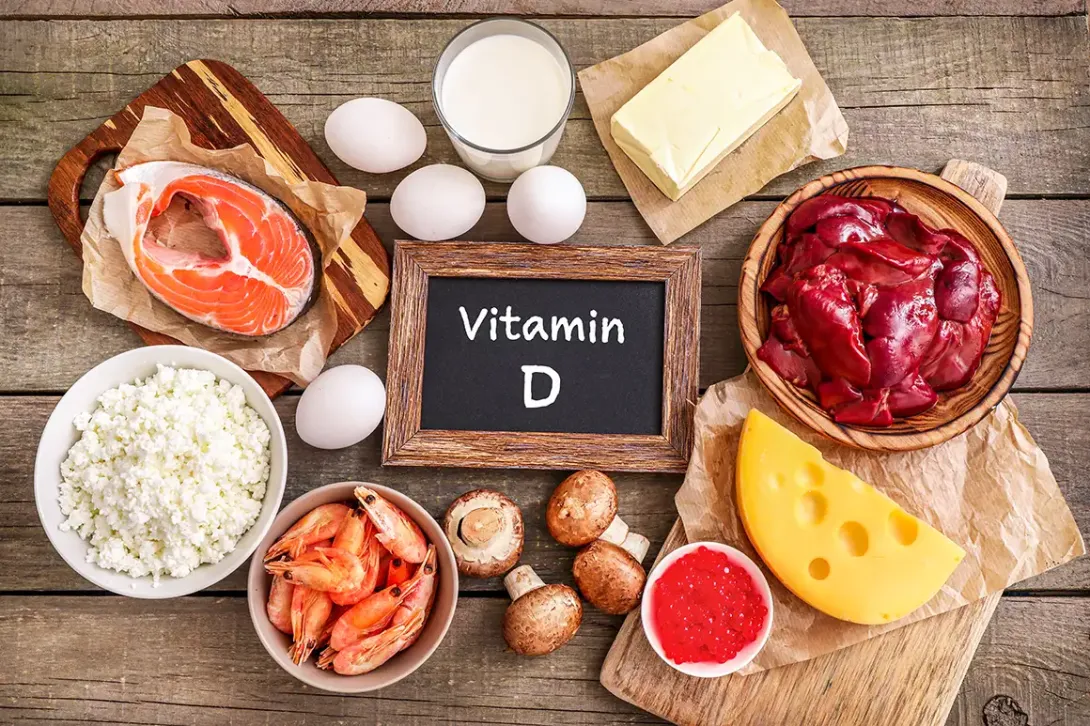
How to get more vitamin D during winter
Vitamin D is mainly synthesised in the skin thanks to sunlight, although it can also be obtained through certain foods and pharmacological supplements.
Vitamin D is a fat-soluble vitamin that plays a key role in many of the organism’s functions. It contributes to the absorption and regular use of calcium and phosphorous, that is to say, to bone health and to the correct functioning of the muscles and the immune system.
During the winter, there is a higher prevalence of vitamin D deficiency, a condition that affects many people due to a lack of exposure to sunlight. The combination of shorter days, cloudy skies and the use of clothing that covers a large part of the body make it more difficult for the organism to synthesise this vitamin.
The Spanish Academy of Dermatology and Venereology (AEDV) affirms that in Spain, from January to March it is necessary to increase the time of exposure to sunlight by up to four times compared to the time necessary for obtaining healthy vitamin D levels in the summer. However, there are different alternative strategies to obtain more vitamin D during the colder months of the year.
How is this vitamin synthesised?
Vitamin D can be synthesised either endogenously or exogenously. Endogenously refers to the cutaneous synthesis of vitamin D in sunlight and it means the main way it is obtained. On the other hand, exogenous synthesis is achieved through eating certain vegetable origin foodstuffs that contain vitamin 2 (ergocalciferol) and/or eating animal origin foods that contain vitamin D3 (cholecalciferol).
A person’s vitamin D levels can be measured by a blood analysis. Insufficiency is talked about when the values for vitamin D25OH (calcidiol) are between 10-30 ng/mL. The deficiency of this vitamin (below 10 ng/mL) is generally caused by not receiving enough sunlight, decreasing its cutaneous synthesis. High skin pigmentation, as well as advanced age, are considered to be risk factors that can contribute to a deficiency.
Different studies have found links between low vitamin D levels in the blood and a higher risk of developing certain diseases. Amongst these are osteoporosis, depression and some cardiovascular diseases. Although there is not always a direct cause and effect relationship, these discoveries suggest that maintaining adequate levels of this vitamin could play a protecting or modulating role in general health.
Amongst the symptoms of a lack of vitamin D, we can identify a feeling of fatigue, muscular pains, a lack of strength and a low mood. However, this deficiency does not always produce symptoms. In children, the most serious form of vitamin D deficiency can produce rickets, a disease that causes skeletal deformities due to the weakening of the bones. In adults, on the other hand, the low bone mineralisation increases the risk of osteoporosis and fractures.
What is an adequate vitamin D intake?
An adequate intake (AI) is understood to be the average intake level of a nutrient that is adequate for the needs of the population. In the case f this vitamin, its AI is 15 micrograms a day.
The strategies that can help to increase vitamin D include nutritional recommendations, exposure to sunlight and supplements when required. To improve the levels through food, the consumption of nutrients that contain the aforementioned vitamin must be guaranteed.
There are some lifestyle habits that also can help to maintain some adequate levels, even in the winter, for example, carrying out physical exercise in the open air. And finally, in cases where the vitamin levels are way below the established limits, a professional may consider prescribing vitamin supplement. Supplements can be prescribed as drops, pills or soft capsules. In these cases, of course, it is important to respect the recommended dose to avoid toxicity problems.



